|
United States : Nebraska
2.8 miles (4.6 km) ESE of Pilger (Stanton), Cuming, NE, USA
Approx. altitude: 423 m
(1387 ft)
([?] maps: Google MapQuest OpenStreetMap topo aerial ConfluenceNavigator)
Antipode: 42°S 83°E
Accuracy: 5 m (16 ft)
Quality:
Click on any of the images for the full-sized picture.
| 42°N 97°W (visit #5) |
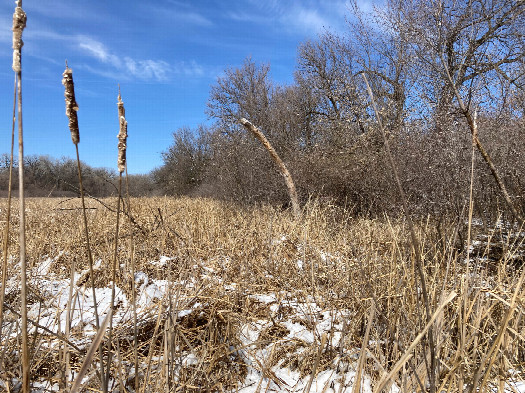 (visited by Michael G, Jack S and Andrew K) 20-Mar-2025 -- 42N 97W falls very close to the shortest route between Omaha and Monowi (a north-central Nebraska town with only one resident), and we were in luck: that was exactly the drive we were doing on this mid-March day. Better yet, the confluence lies on public land (the only such one in Nebraska as far as I can tell), in the tiny Black Island Wildlife Management Area. Said WMA is not even a mile across, adding further to the luck — we'd be hard pressed to find an excuse not to go: a free hike, confluence, and up-close introduction to the natural landscape of northeast Nebraska. We departed a chilly, snow-covered Omaha in the morning; eastern Nebraska had experienced a late-season blizzard the day before, so it sure didn't feel or look like the Spring Equinox. I was impressed at the efficiency of the road crews around the region: despite the previous day's 4 to 6 inches of snowfall (10 to 15 cm), the roads were already in pretty good shape for traveling. As it would happen, 42N 97W was on the northern periphery of the heaviest snow accumulations and Omaha was on the southern edge, so our drive transected the corridor of highest blizzard impact (an area that received 8 to 12 inches/20 to 30 cm on top of very high winds). As mentioned, the roads were in fine condition by now, but we passed a couple downed power lines and more than a few abandoned cars on the shoulder along the way. We weren't entirely sure that the rural access roads to the wildlife management area would be passable, but arrived at our turn off US 275 (1.3 mi/2 km north of the confluence) to find a damp but clear (and wide) gravel road. A few minutes later, we found the WMA's entrance road similarly melted; I'd have never guessed a blizzard happened the day before, the March sun was doing a good job. Fortunately there were no other vehicles at the WMA parking area — this land is probably used for hunting, and while I don't think we would have been mistaken for Nebraskan wildlife (i.e., we wouldn't get shot at), I also didn't want to ruin some hunter's day by scaring away every nearby deer and bird with our own esoteric version of hunting. The gravel lot is about a half mile (800 m) west of 42N 97W, just north of the Elkhorn River. Most of our approach on-foot followed a pleasant snow-covered path, untouched by man this morning, with a smattering of animal tracks (see this photo, taken during our eastward walk). This was one of the nicer confluence walks Jack and I have done so far, basically a low-caliber trail surrounded by a deliberately preserved natural environment. We didn't see any deer on our way, but there were a handful of birds perched on the dry vegetation near the trail. With the bonus of a snowy landscape, I was thoroughly enjoying myself; can't speak for the others, March snow isn't everyone's cup of tea! The walking trail brought us within the 100 meter successful visit range, but we weren't about to miss out on all zeroes — it was time to stumble through some vegetation in search of the real spot. There is a shallow depression that roughly parallels the trail in the confluence's vicinity; satellite imagery suggests it probably gets swampy in the warmer months, but today it was just about as easy to traverse as the path we'd departed (though perhaps a bit marshy below the snow). The real slowdown started once we got within 15 meters, now at the edge of a patch of dormant trees. I'd miscalculated and thought that the point would be a few strides into these trees — I dove in and began an awkward crouched-over pursuit of the "true" 42N 97W. Over the next few minutes (while snaking around branches and the odd thorny plant), I accidentally completed half of an ellipse around the confluence but somehow hadn't yet maneuvered my way to it! I emerged from the trees still about 15 meters away, this time on the opposite side. When it finally became clear that our goal lay on the edge of the trees, I carefully worked my way toward the likely spot and eventually caught a glimpse of all zeroes. At this point, I'd almost certainly zero-metered the confluence and started the directional photos. (Jack and Andrew, who'd been observing the search from about a half-dozen meters away, came over and also stood on the precise point.) The north and east views were filled by the dormant tree patch I'd crossed through earlier, but other directions were more interesting. Our wintry westward view contrasts nicely with the greener scenery Joseph Kerski captured in his own west facing shot from May 2021, and the south view looks across the snowy marshland toward the trail (on the ridge in the distance). The weather was pretty nice considering the previous day's storm: the temperature hung in the upper 30s (~3°C) under a thin layer of clouds and not much wind (good enough for short sleeves thanks to the sun). I spent an additional few minutes pacing around trying to get a prolonged "perfect" GPS reading I could photograph, and I suspect that the trees were interfering with the signal. We were close to accepting our otherwise ideal visit and set a timer for when we'd start heading back (Monowi was waiting). With 90 seconds to go the GPS finally cooperated and we logged a perfect confluence intercept: Jack and I's first in Nebraska, and Andrew's first overall! Satisfied with what we'd seen, having spent about 20 minutes near the spot, we returned to the path and started our walk back to the car. While I understand why northeast Nebraska isn't famous for its natural beauty, I enjoyed our short and peaceful detour into a protected slice of its landscape. It was now the early afternoon and we were hungry — we got back on the highway heading west: next stop, the Monowi Tavern. |
| All pictures |
| #1: Looking northwest toward 42N 97W, located in front of the prominent trunk in the middle right of the photo #2: Looking north from the confluence, at the dormant trees #3: Looking east, more trees #4: Looking south #5: Looking west #6: Zeroes on the GPS! #7: The snowy path that passes near 42N 97W ALL: All pictures on one page |

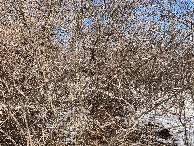
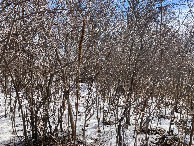
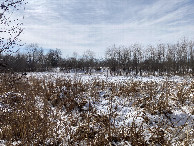
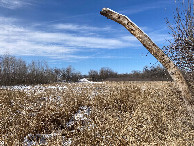
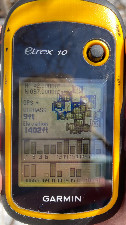
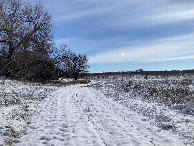
![Visit #4: [16-May-21] Visit #4: [16-May-21]](/us/ne/n42w097v4/preview.jpg)
![Visit #3: [22-Mar-08] Visit #3: [22-Mar-08]](/us/ne/n42w097v3/preview.jpg)
![Visit #2: [07-Mar-06] Visit #2: [07-Mar-06]](/us/ne/n42w097v2/preview.jpg)
![Visit #1: [06-Jan-01] Visit #1: [06-Jan-01]](/us/ne/n42w097/preview.jpg)